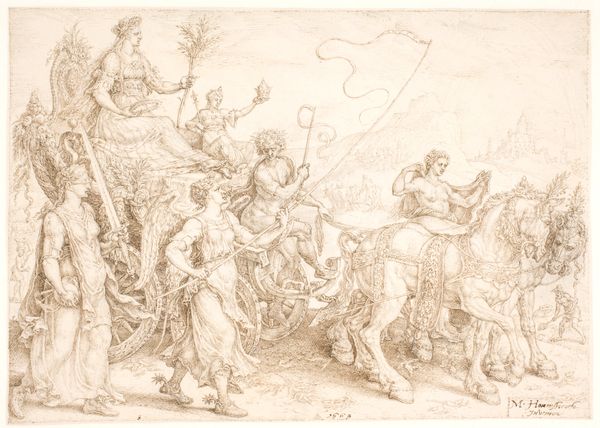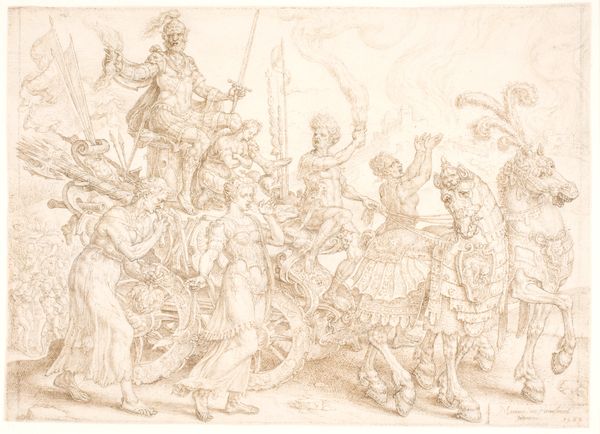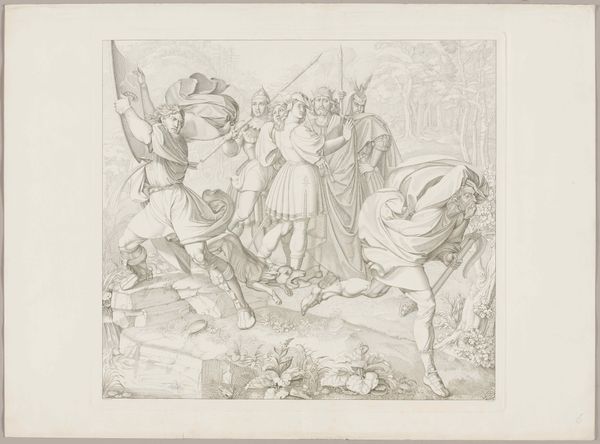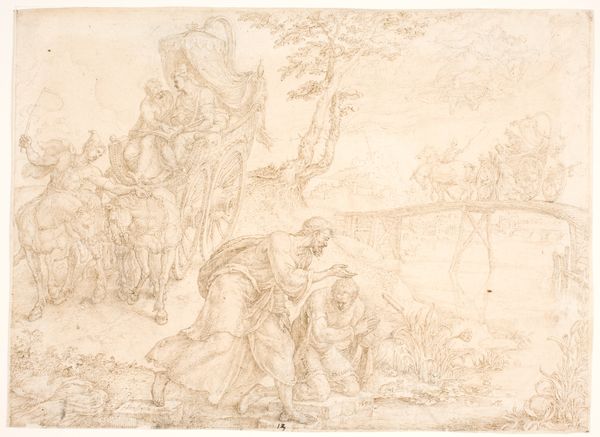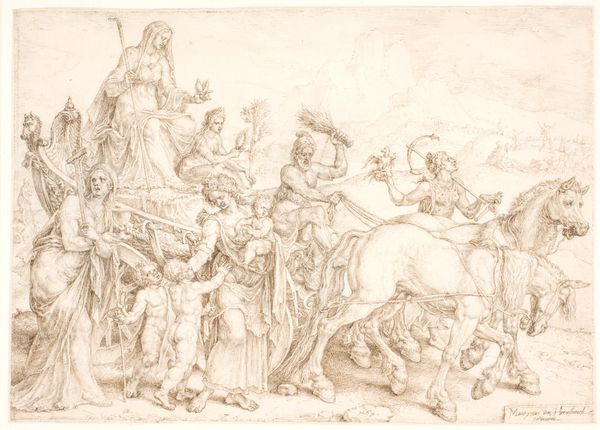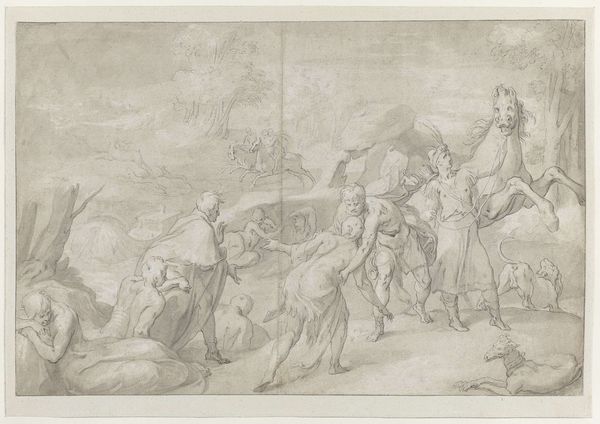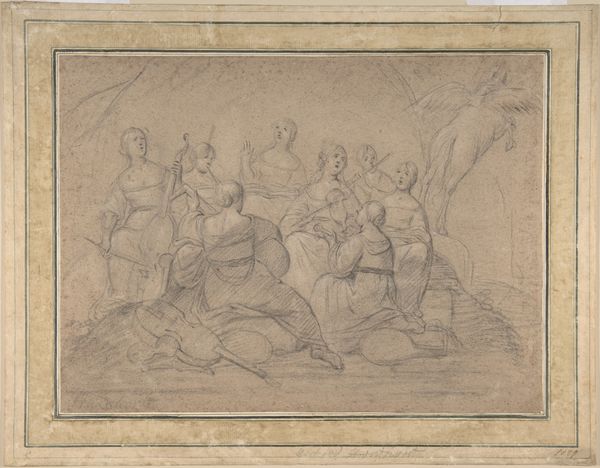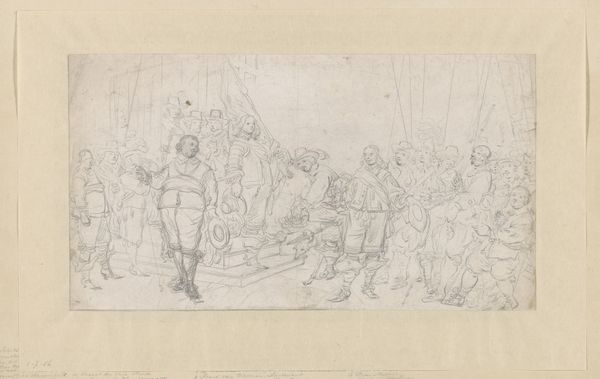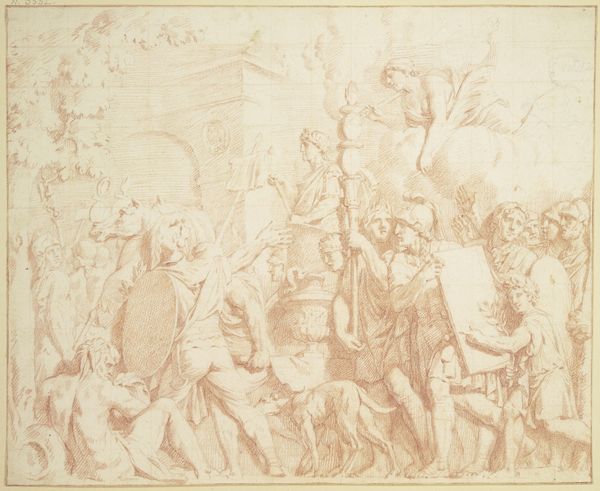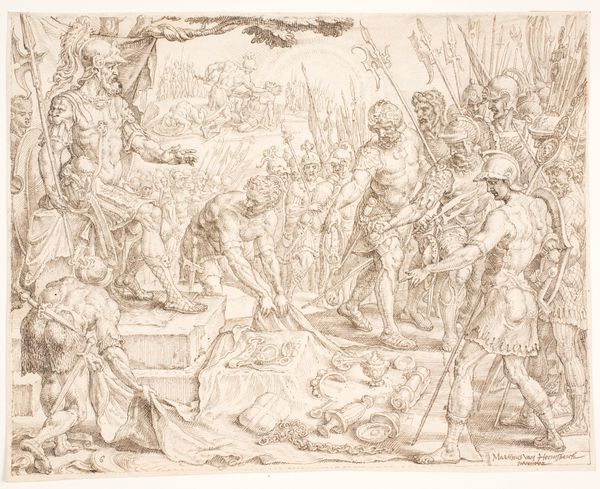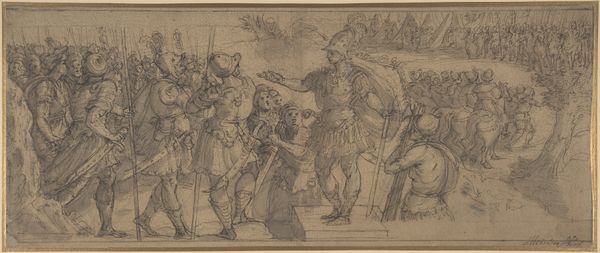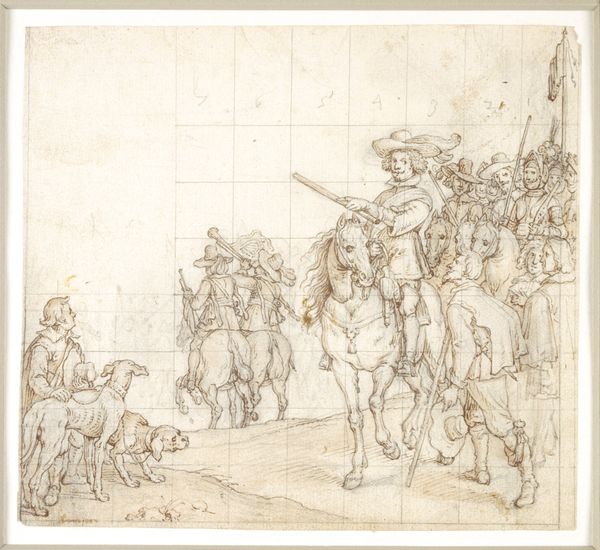
drawing, pencil
#
drawing
#
16_19th-century
#
landscape
#
figuration
#
romanticism
#
pencil
#
history-painting
Copyright: Public Domain
Curator: Peter Cornelius rendered this stark pencil drawing, entitled "Sigfrid's Death", sometime between 1812 and 1817. It resides here at the Städel Museum. Editor: My immediate impression is one of contained drama. It’s quite light, almost airy, despite the obvious narrative of violence. There's an almost theatrical, frozen quality. Curator: I concur. The classical, almost frieze-like arrangement of figures contributes to that. Observe the deliberate placement and balance across the pictorial field, particularly the protagonist Sigfrid in the foreground against the dense backdrop of trees. The strategic grouping of the figures, creating rhythm and visual harmony, elevates this work beyond mere illustration. Editor: But it *is* an illustration, isn’t it? Consider Cornelius's intense investment in reviving Germanic myth—in the cultural and artistic raw materials accessible to him. The medium itself, pencil, is quite humble; this work speaks more to craft, to diligent practice in creating preparatory designs. Its worth, at least initially, resided in this kind of manual labor and design, not as high art in itself. Curator: Granted, its genesis might lie in preliminary sketches. But observe the virtuosity of line, the command of anatomy. Look how Cornelius articulates depth through varying pencil pressure, the way he uses shadow and highlight to convey not just form, but mood! To dismiss it as a mere preparatory sketch does a disservice to the intentionality behind the composition. This embodies Romantic ideals through the clear formal structuring of neoclassicism. Editor: Well, that “intentionality” speaks volumes about his specific Romantic-era social milieu, doesn’t it? A yearning for origins, for mythologized national identities. How do such fantasies serve the patron and artist’s social needs? What labour and what conditions produce this idealized representation of the past? These historical contexts must be considered as vital components of the drawing. Curator: Perhaps. But to fully appreciate this piece, it's vital to apprehend how Cornelius organizes space, light, and form to create meaning. The work transcends literal narrative. Editor: Yes, and how he chooses *that* particular narrative is telling of his contemporary world. I leave this analysis with an invitation to scrutinize this beautiful image, not only as a collection of aesthetic gestures but also to observe its relation to the labour of Cornelius in early 19th-century Germany. Curator: An astute reminder. Let us remember both artistic structure and context coexist within the single image.
Comments
No comments
Be the first to comment and join the conversation on the ultimate creative platform.
